Manchester Airport has commenced a huge two year project to modernise their airspace by designing new flight paths.
Despite advances in technology, such as satellite-based routes which enable aircraft to fly more accurately and closer together, the way airspace is managed in the UK has changed little since commercial flights began in the 1950s.
As a result of developments in aircraft technology and the fact that more people than ever are flying, the Government has asked the aviation industry to overhaul the way UK airspace is managed. As part of a co-ordinated national programme, all airports are now taking a fresh look at how aircraft fly below 7,000 feet, to see what improvements can be made.
A spokesperson a Manchester Airport said "We hope that the modern ways of flying that are now available to us will mean that we can reduce delays, make customers' journeys more reliable, reduce the effect flying has on the environment, better manage some of the local effects of flying (such as noise nuisance) and achieve further improvements in safety."
The process of modernising the airspace will take more than two years and will involve a series of different stages. Manchester Airport are currently in the first stage of the process, which involves asking those affected by the business to give them their views on the principles they should consider when designing new flight paths.
John Mayhew General Manager of NATS at Manchester Airport "Imagine if we hadn't changed roads since 1960 – things just wouldn't work. We need an infrastructure to be modernised to be as efficient as possible for the aviation industry and the communities we serve."
In order to develop the design principles, a series of questions are being put forward to the public for consideration such as whether the airport should avoid aircraft flying over new areas or design the best possible routes even if this means flying over new areas; concentrating flight paths, which will affect fewer people but to a greater extent, or spreading out flight paths, which will affect more people but to a lesser extent.
Amongst the other options being considered if whether to avoid flying over built-up areas, which will affect fewer people but to a greater extent, or avoid flying over villages and rural communities, which will affect more people but to a lesser extent.
Plus whether they should fly the most direct routes possible to reduce emissions, even if this means flying over more people or avoid flying over communities so fewer people are affected by aircraft noise, even if this means higher CO2 emissions.
Manchester Airport will be gathering views on what their design principles should be until October 6th and they expect the CAA to review the proposals at the beginning of 2020. If it is satisfied with the proposals they will be able to proceed to the next stage of the process and begin developing flight path options which they intend to consult the public on in late 2020 or early 2021.
Visit the Manchester Airport website for further information and submit your views.
The area in red on the map above shows the area within which aircraft landing at and taking off from Manchester Airport fly below 7,000 feet.


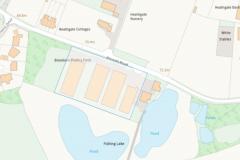
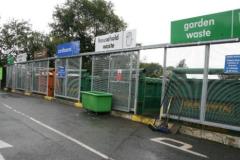
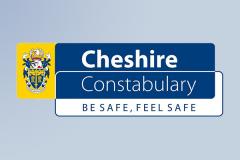

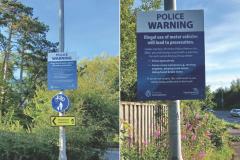
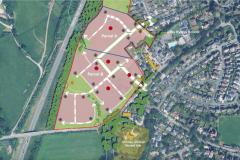
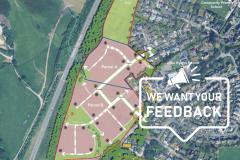

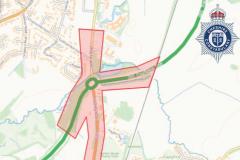
Comments
Here's what readers have had to say so far. Why not add your thoughts below.
Many aircraft departures from Manchester Airport are southbound, and prior to the opening of the second runway, southbound aircraft taking off towards the west (by far the predominant take off direction) used to curve to the left, around the Wilmslow conurbation, almost immediately after take off in order to position onto their desired southerly heading. This put a lengthy noise footprint onto Wilmslow and Alderley as they made this climbing turn to the south.
When the new runway was opened, these westerly take off paths were modified to turn right, to the north, instead of left, southbound aircraft subsequently turning left after a couple of miles to gain their required track. This is because the second runway is displaced to the west by a considerable margin compared to the original runway, so an unchanged take off track off that runway would result in unacceptably low flights over the Knutsford area (when both runways are in use for westerly operations, the old runway is used for landing, the new one for take offs).
No doubt the airlines would like to revert to a more direct southerly departure, so what must be guarded against is, at times when the airport is only operating on the original runway, a return to the old 'turn left after take off' departure route with is subsequent noise footprint on Wilmslow and Alderley.
Now any sane person would say "Save CO2 and noise" but (a) the airport could literally not care less about CO2 since one flight to Beijing uses more CO2 than months of aircraft "wiggling" around Knutsford (b) They intend to increase by 7% year on year meaning in 10 years time an over 90% increase in flights and (c) they simply want to get around the annoying (from their view) legal obligations they signed in the 90s.
The residents of Alderley, Wilmslow, Warford, Marthall, Chorley... in fact most of Cheshire East need to make sure the airport's aircraft continue to fly over Greater Manchester where the noise is less noticeable and the councils of Greater Manchester (who own 63% of the airport and get sizable dividends from it) don't get to avoid their aircraft's noise and avoid their promises and obligations